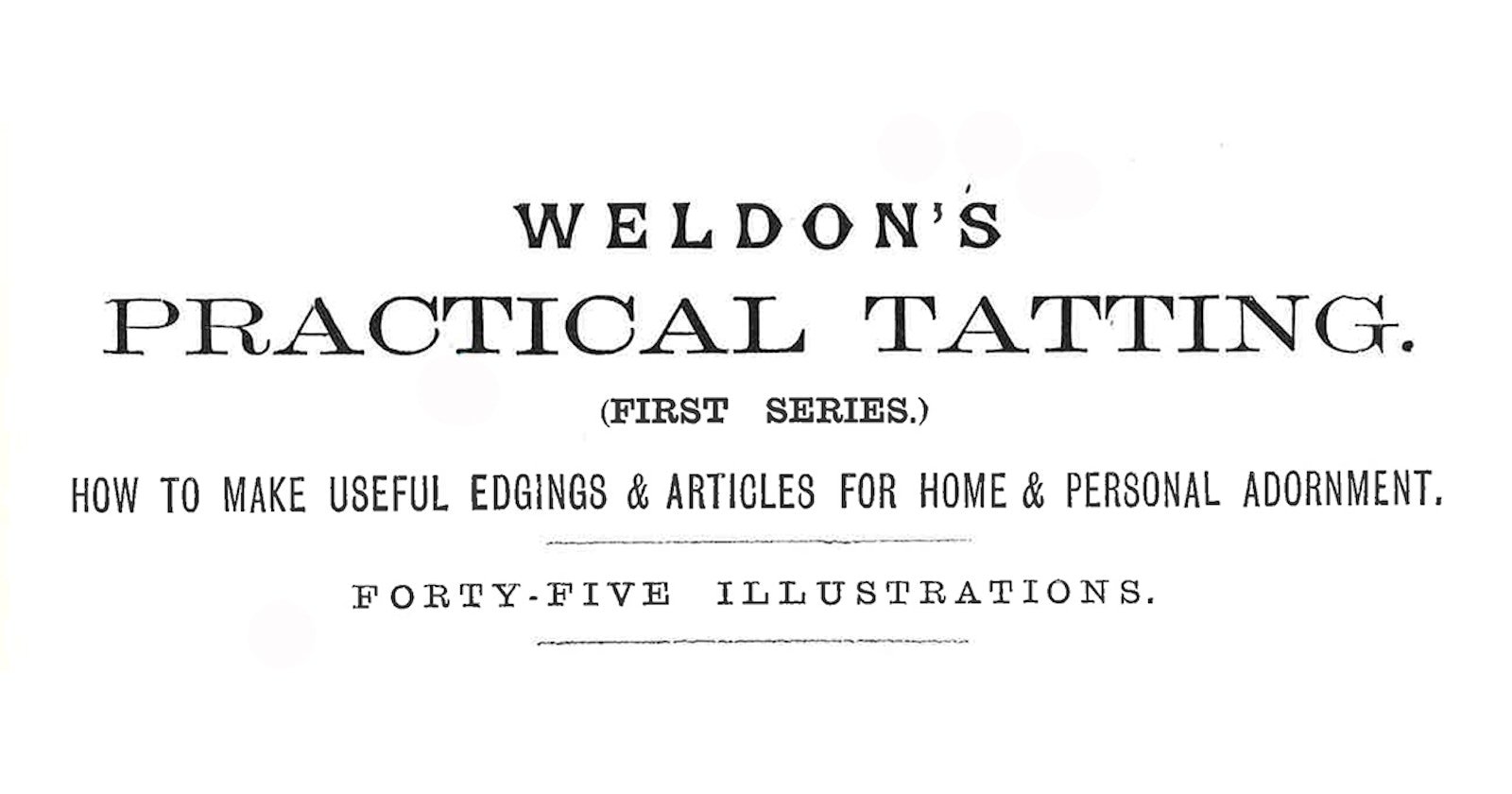Weldon’s Practical Needlework houses a wealth of information on Victorian tatting. Here’s our seventh installment in this series from Weldon’s Practical Needlework, Volume 4. The following are two edgings: one, ovals with “picoteed” scallops, and the other, ovals and eyelets. The material is reproduced here just as it appeared in England in 1889. No alterations or corrections were made.
Illustrations from Weldon’s Practical Needlework, Volume 4.
Fig. 12.—SIMPLE EDGING OF OVALS WITH PICOTEED SCALLOPS.
FOR the 1st oval—Make a loop on the fingers with the shuttle thread, do 4 double stitches, 1 picot, 3 double, 1 picot, 1 double, 1 picot, 1 double, 1 picot, 3 double, 1 picot, 4 double, draw up close; for the _2nd oval, _ * make a loop, leave ⅜ of an inch of cotton from the last oval and work 4 double, join (as see Fig. 11) to the last picot of the previous oval, 3 double, 1 picot, 1 double, 1 picot, 1 double, 1 picot, 3 double, 1 picot, 4 double, and draw up close; repeat from * for the length required. Our illustration (Fig. 12) shows three picoteed scallops. If worked with fine cotton, such as Evans' crochet cotton No. 16, and with a row of double crochet to strengthen over the single thread that connects the scallops, this edging makes a pretty trimming for pinafores and baby things.
Illustrations from Weldon’s Practical Needlework, Volume 4.
Fig.13.—EDGING OF OVALS AND EYELETS.
COMMENCE for the 1st oval—by making a loop on the fingers, dc 4 double, 1 picot, 2 double, l picot and 1 double alternately four times, 1 picot, 2 double, 1 smaller picot, 4 double, and draw up; reverse the work, that is, turn the oval upside down under the thumb and finger, so that the two threads of cotton are now at the top, make a loop, and beginning ⅛ of an inch away from the oval work for an eyelet, 3 double, 1 picot, 3 double, 1 small picot, 3 double, 1 larger picot, 3 double, and draw up; * reverse the work, make a loop, and beginning ⅛ of an inch away from the eyelet do 4 double, join to the last picot of the previous oval, 2 double, 1 picot and I double alternately four times, 1 picot, 2 double, 1 smaller picot, 4 double, and draw up; reverse the work, make a loop, and beginning ⅛ of an inch from the oval, work 3 double, join to the last picot of the previous eyelet, 3 double, 1 small picot, 3 double, 1 larger picot, 3 double, and draw up; and repeat from *. The engraving (Fig. 13) shows five scallops of this pretty edging, which is useful for trimming under-linen, and for any purpose for which a narrow border is desired.
If you missed any part of this series on Victorian tatting from Weldon’s, you can catch up on all of the blog posts here. Find out more about tatting in our video download Shuttle Tatting with master tatter Georgia Seitz.
Featured Image: Weldon’s Practical Needlework, Volume 4, offers up a wealth of information on Victorian tatting.



